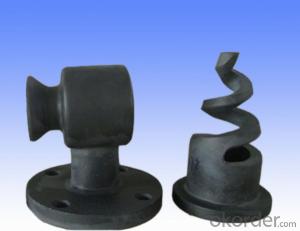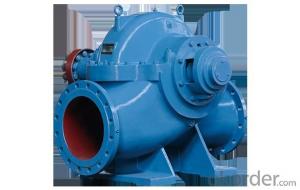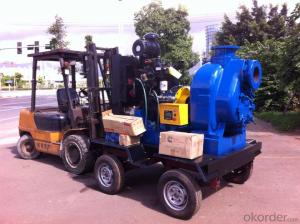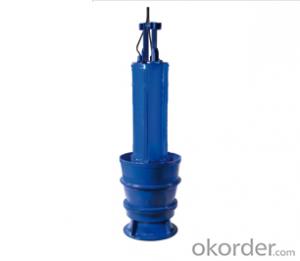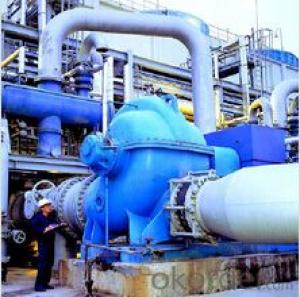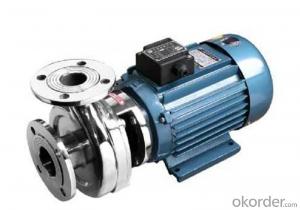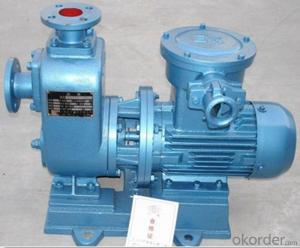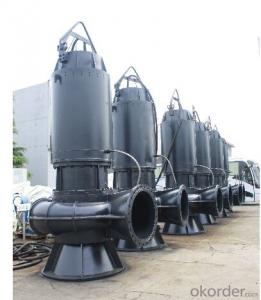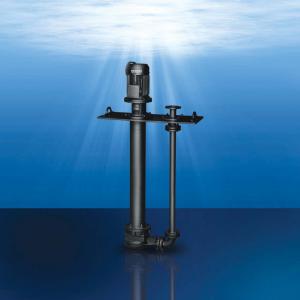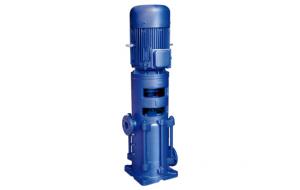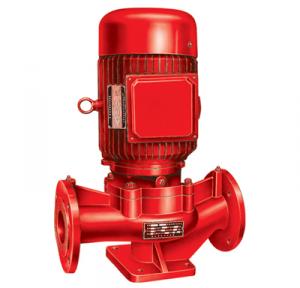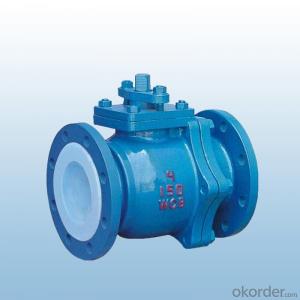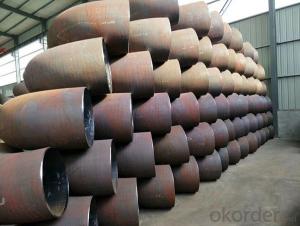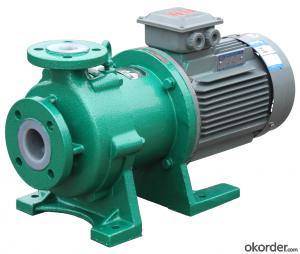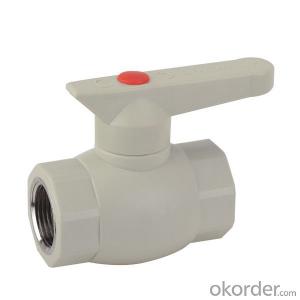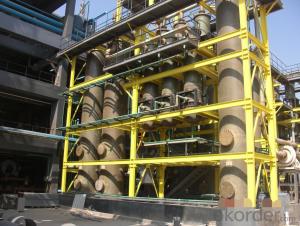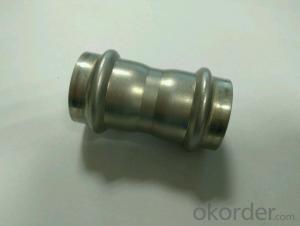SSIC Silicon carbide nozzle
- Loading Port:
- China main port
- Payment Terms:
- TT OR LC
- Min Order Qty:
- 5 m.t
- Supply Capability:
- 50 m.t/month
- Option:
- order
OKorder Service Pledge
OKorder Financial Service
You Might Also Like
Item specifice
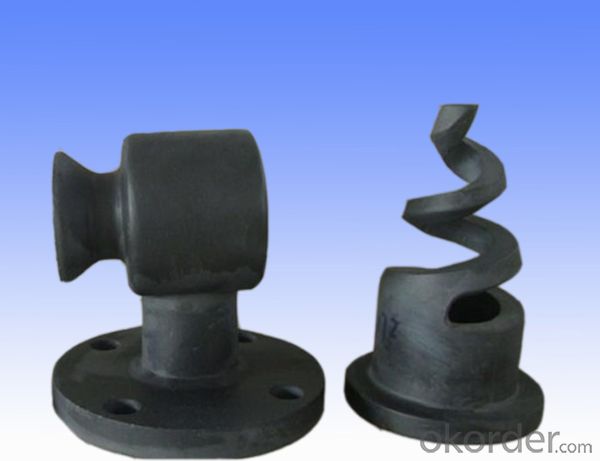
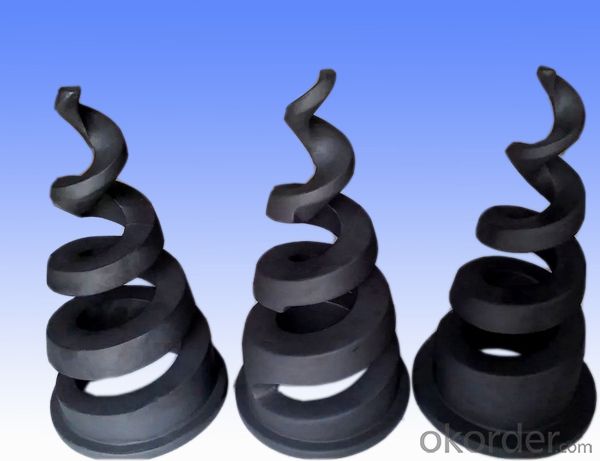
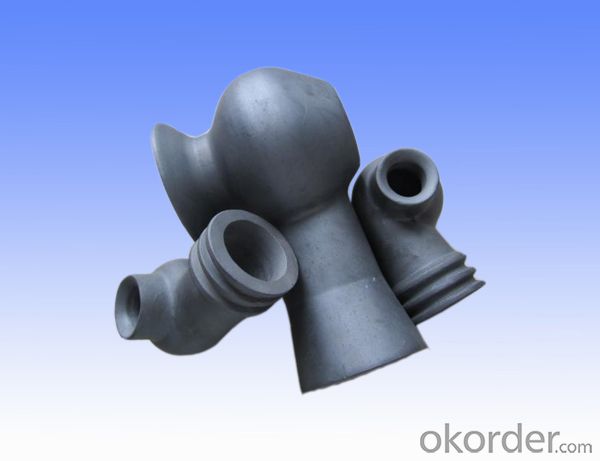
Tailor-made for customers all kinds of pumps with my company, kettle, bearing no pressure sintering silicon carbide mechanical seal, and all kinds of resistance corrosion pump parts and the accessories. Our company pressureless sintered silicon carbide products a reaction bonded silicon carbide products, can easily adapt to the harsh working conditions, in strong corrosive, strong wear, high temperature, high pressure, high strength harsh harsh under complex conditions is more outstanding. At the same time, our company to provide customers with nozzles, armored body armor plate and other special-shaped pieces of custom-made service.
Compared with the reaction sintered silicon carbide product (SSIC), the production process of the sintered silicon carbide product (RBSIC) is complex and the production investment is high. In addition, whether it is in the resistance to corrosion and abrasion, compressive and flexural fracture resistance of or high pressure, high temperature and other properties are more excellent, this is pressureless sintering silicon carbide products will in the near future completely replace reaction bonded silicon carbide products is one of the important reasons. The main varieties of the pressureless sintering silicon carbide products with all kinds of mechanical seal with sealing ring and moving ring and static ring, corrosion resistant pump, magnetic pump, shield pump components. At the same time, the production special-shaped pieces of nozzle, wire drawing die, armor plate. According to the drawings, we will provide customers with satisfactory products and customer satisfaction. Let customer satisfaction is one of the purposes of our company has been pursued, but also one of the objectives pursued by all the staff of our company.
Features: high temperature resistance, wear resistance, corrosion resistance, oxidation resistance, hardness, heat conduction
Main products: mechanical seals, pump parts, nozzles, bullet proof plate
Mechanical seals: high hardness, high wear resistance, good self - Lubrication and high heat conductivity, so the service life of mechanical seal is greatly improved.
Pump: resistance to corrosion and wear characteristic of the pressureless sintering silicon carbide become magnetic pump sliding bearing, resistant corrosion pump sleeve, shielding pump assembly, etc. various kinds of pump of choice
Nozzle: wear resistant, high temperature resistance, high hardness characteristics of the normal pressure sintering silicon carbide nozzle to become a perfect alternative to carbide nozzle
Armor: light weight, high hardness, good ballistic performance, pressureless sintering of SiC for your life and property security escort
Here are some of the pressure sintered silicon carbide products, physical and chemical parameters:
medium | content | Causticity | |||||||
Atmospheric SIC | The reaction SIC WC | WC | AL2O3 | ZrO2 | Si3N4 | stainless steel | steel | ||
HNO3 nitric acid | 50% | A | A | C | A | A | C | C | C |
Hydrochloric acid HCI | 35% | A | A | C | A | A | C | C | A |
Sulfuric acid H2SO4 | 98% | A | A | C | A | A | C | C | A |
Hydrofluoric acid HFF | 40% | A | C | C | C | C | C | C | C |
Phosphoric acid H5PO4 215OC | 85% | C | C | C | C | C | C | C | C |
HNO3+HF | 20%+5% | A | C | C | C | C | C | C | C |
Sodium chlorate NaCIO | 10% | A | B | C | A | A | A | C | A |
Sodium hydroxide NaOHH | 50% | A | C | A | B | A | B | A | A |
Potassium hydroxide KOH | A | C | A | B | A | B | A | A | |
Acetic acid CH3COOHH | 80% | A | A | C | A | A | C | C | C |
Sodium sulfate + Na2CO3 + H2SO4 925OC
| A | A | C | A | A | C | C | B | |
Silica solution SIO2
| B | C | C | C | C | C | |||
Assessment Method: the specimen prior polishing, immersed in the test liquid (70OC) for 100 hours, the weight was measured and observed microstructure, weight reduction is calculated by the degree of corrosion was observed microstructure for corrosion to comprehensive judgments. | |||||||||
A level (corrosion): corrosion rate ≤0.125mm / ingredients in a small amount of corrosion observed slice | |||||||||
Level B (somewhat resistant): corrosion rate = 0.125-1.0mm / or annual corrosion rate ≤0.125mm / observe a large number of corrosion | |||||||||
Class C (resistant to corrosion): corrosion rate ≥1.0mm / or the main ingredient of Corrosion
Silicon carbide performance indicators
Index Name
| Atmospheric SiC | Reaction Bonded Silicon Carbide |
Purity (%) of silicon carbide | > 97 | >90 |
Density (g / cm) | 3.06-3.15 | >3.05 |
Particle size (um) | 0.5-0.7 | 8-20 |
Hardness (HRA) | ≥90 | ≥90 |
Flexural Strength (MPa) | 400-580 | 350-450 |
Compressive strength (MPa) | 3900 | >2500 |
Fracture Strength (MPa) | 3.05-4.6 | 4.3 |
Elastic Modulus (GPa) | 380-410 | 420 |
Thermal conductivity | 102.6 | 35-110 |
Coefficient of thermal expansion (1 / ℃) | 4.02×10 | 4.3×10 |
Poisson's ratio | 0.14 | 0.15 |
- Q:What are the signs of wear on a pump shaft sleeve?
- Some signs of wear on a pump shaft sleeve include: 1. Grooving or scoring: If the pump shaft sleeve shows deep grooves or scoring, it is a clear indication of wear. This can occur due to the friction between the sleeve and the shaft over time. 2. Surface roughness: A worn pump shaft sleeve may have a rough or pitted surface. This can be caused by corrosion, erosion, or abrasive particles present in the fluid being pumped. 3. Excessive clearance: If there is a noticeable increase in the gap between the pump shaft and the sleeve, it suggests wear. This can result in reduced efficiency and increased vibration in the pump. 4. Leakage: If the pump shaft sleeve is worn, it may cause fluid to leak from the pump. This can be seen as visible signs of leakage around the sleeve or through the seal area. 5. Misalignment: A worn pump shaft sleeve can cause misalignment between the pump shaft and the impeller. This can lead to increased noise, vibration, and premature failure of other pump components. 6. Reduced performance: Wear on the pump shaft sleeve can result in reduced pump performance, such as lower flow rate or decreased head pressure. This can be observed through monitoring the pump's output and comparing it to its original specifications. It is important to regularly inspect the pump shaft sleeve for signs of wear and address any issues promptly to prevent further damage to the pump and ensure optimal performance.
- Q:How can pump shaft vibration be prevented?
- To prevent pump shaft vibration, there are various measures and techniques that can be employed. Here are some effective ways to reduce or eliminate pump shaft vibration: 1. Accurate alignment is crucial: Ensuring precise alignment between the pump and its driver is of utmost importance. Misalignment can result in excessive vibrations, so it is essential to align the pump shaft and the driver shaft correctly. Laser alignment tools can be utilized to achieve the desired alignment. 2. Balancing is key: Imbalance in rotating machinery, including pumps, can cause significant vibration. Balancing the rotating components, such as impellers, rotors, or couplings, can help prevent pump shaft vibration. Dynamic balancing machines can be used to identify and rectify any imbalance. 3. Strengthen the foundation: A robust foundation is required to support the pump and absorb vibrations. Strengthening the foundation by using concrete pads or mounting systems with vibration isolation properties can aid in reducing pump shaft vibration. 4. Optimal lubrication: Proper lubrication of bearings and mechanical seals can prevent excessive friction and wear, consequently reducing pump shaft vibration. It is important to adhere to regular maintenance and lubrication schedules to ensure the pump's optimal functioning. 5. Adequate pipe support: Providing proper support to suction and discharge pipes is essential to prevent pipe strain and subsequent vibrations. Installing pipe supports at appropriate intervals can eliminate excessive pipe movement and vibration. 6. Regular maintenance and monitoring: Consistent maintenance, including inspection of bearings, seals, and other components, can help detect early signs of wear or damage that may cause pump shaft vibration. Implementing a vibration monitoring system can also aid in promptly identifying and addressing any vibration-related issues. 7. Upgrading and replacing worn parts: As time passes, certain components of the pump may wear out or become damaged, leading to increased vibration. Upgrading or replacing these worn parts, such as impellers, bearings, or seals, can help maintain the pump's stability and prevent shaft vibration. By following these preventive measures, pump shaft vibration can be minimized or eliminated, guaranteeing the efficient and reliable operation of the pump system.
- Q:What is the effect of pump shaft misalignment on bearing life?
- Bearing life can be significantly affected by misalignment of the pump shaft. When the pump shaft is not properly aligned, it creates uneven loading on the bearings, leading to increased friction and wear. This can result in the bearings failing too soon and the pump's overall performance being reduced. Misalignment can cause the bearings to experience excessive radial and axial forces, which increases stress and fatigue. Consequently, the bearings can develop surface damage such as pitting or spalling, ultimately resulting in a loss of bearing integrity and failure. Moreover, misalignment compromises the lubrication film between the shaft and bearings. This leads to inadequate lubrication, causing more friction and heat generation. Over time, this accelerates bearing wear and ultimately leads to premature failure. Furthermore, misalignment also causes vibration and noise, exacerbating the issue and contributing to bearing damage. Vibrations impose additional stress and impact forces on the bearings, accelerating their wear and tear. To mitigate the negative effects of pump shaft misalignment on bearing life, regular inspection and alignment of the pump shaft are essential. Precision alignment techniques like laser alignment or dial indicator alignment can achieve this. By maintaining proper alignment, the load distribution on the bearings can be optimized, reducing the risk of premature bearing failure and prolonging the overall service life of the pump system.
- Q:How is pump shaft key stock selected?
- When choosing pump shaft key stock, it is important to take into account various factors to ensure the proper functioning and longevity of the pump system. Key stock is used to connect the pump shaft to the impeller or other rotating components, transmitting torque and preventing slippage. To select the right pump shaft key stock, there are several factors that need to be considered: 1. Determining the size and dimensions of the shaft and keyway: The first step involves measuring the width, depth, and length of the keyway, as well as the diameter and length of the shaft. 2. Considering the torque requirements: It is crucial to consider the amount of torque that will be transmitted through the shaft. Applications with higher torque may require stronger and thicker key stock to prevent shearing or bending. 3. Ensuring material compatibility: The key stock material should be compatible with the shaft and keyway materials to avoid galvanic corrosion or excessive wear. Common materials for key stock include carbon steel, stainless steel, and brass. 4. Selecting the appropriate type of key stock: There are different types of key stock, such as square, rectangular, and woodruff keys. The type of key stock needed depends on the shape and dimensions of the keyway. 5. Distributing the load evenly: The key stock should be chosen in a way that evenly distributes the load across the entire keyway. This helps prevent stress concentration and potential failures. 6. Considering safety: It is essential to ensure that the selected key stock is strong enough to withstand the forces and stresses it will encounter during operation. Choosing weak key stock can lead to catastrophic failures and safety hazards. 7. Taking into account application-specific requirements: Depending on the specific application and operating conditions, additional considerations may be necessary. For example, if the pump operates in a corrosive environment, key stock made from a corrosion-resistant material may be required. By considering these factors, engineers and technicians can select the appropriate pump shaft key stock that will provide optimal performance, reliability, and durability for the pump system. It is always recommended to consult with manufacturers, industry standards, and engineering guidelines to ensure the correct selection of key stock for a specific pump application.
- Q:How can pump shaft deflection be measured?
- There are different methods available for measuring pump shaft deflection, depending on the type of pump and desired level of accuracy. One option is to use a dial indicator, which is a precise measuring instrument. The dial indicator is mounted near the pump shaft and a contact point is positioned against the shaft. As the shaft rotates, any deflection will cause the indicator needle to move, allowing for measurement. Another method is laser shaft alignment, which provides a more precise and efficient way to measure shaft deflection. Laser alignment tools use laser beams to measure the position of the rotating shaft in relation to a fixed reference point. By analyzing the collected data, shaft deflection can be determined with high precision. Vibration analysis can also be used in some cases to indirectly measure pump shaft deflection. Vibration sensors are placed on the pump and its surrounding components to detect abnormal vibrations caused by shaft deflection. By analyzing the vibration patterns, engineers can estimate the amount of deflection present in the pump shaft. It is important to note that pump shaft deflection should be measured at multiple points along the shaft, including near the impeller, coupling, and bearing locations, as deflection can vary in different areas. Regular monitoring of pump shaft deflection is essential to ensure proper functionality and longevity of the pump, as excessive deflection can lead to increased wear and damage to the pump components.
- Q:How can a pump shaft be protected from abrasive particles in the pumped fluid?
- To safeguard a pump shaft from abrasive particles in the fluid being pumped, one can employ a protective coating or sleeve. These coatings or sleeves, crafted from materials like ceramic, polymer, or stainless steel, exhibit resistance to abrasion and can endure the fluid's demanding conditions. Another approach entails the installation of a bearing or seal system explicitly designed to prevent the infiltration of abrasive particles into the pump shaft. This objective can be accomplished through the implementation of labyrinth seals, mechanical seals, or double mechanical seals that establish a barrier between the fluid and the shaft, thereby thwarting any contact between the particles and the shaft. Furthermore, it is imperative to conduct regular inspections and maintenance on the pump to ensure optimal operation. This encompasses purging the pump and eliminating any accumulated debris or particles that may potentially inflict harm upon the shaft. Consistent upkeep and inspection aid in early detection of issues and avert further damage to the pump shaft. Lastly, it may be necessary to adjust the pump's operating parameters, such as the flow rate or speed, in order to mitigate the impact of abrasive particles on the shaft. By optimizing the pump's performance and minimizing exposure to abrasive particles, the pump shaft can be shielded and its lifespan extended.
- Q:How do you prevent pump shaft erosion?
- To ensure pumps have a long lifespan and operate efficiently, it is crucial to prevent pump shaft erosion. Here are several effective strategies for achieving this: 1. Material choice: Selecting appropriate materials for the pump shaft is vital. Consider using corrosion-resistant alloys like stainless steel or nickel-based alloys, which have higher resistance to erosion and corrosion. It is important to choose the right material based on the pumped fluid. 2. Protective coatings: Applying protective coatings to the pump shaft can significantly reduce erosion. Coatings such as ceramic, epoxy, or polymeric materials provide an additional layer of protection against abrasive particles in the fluid, minimizing shaft erosion. 3. Filtration and strainers: Installation of proper filtration and strainers in the pump system helps remove solid particles or debris from the fluid before it reaches the pump. This reduces the likelihood of abrasive contaminants causing erosion on the pump shaft. 4. Fluid conditioning: Properly conditioning the fluid before it enters the pump helps prevent erosion. This includes removing air bubbles, adjusting temperature, and maintaining the optimal pH levels to minimize the corrosive effects of the fluid on the pump shaft. 5. Regular maintenance and inspection: Implementing a scheduled maintenance routine is essential to prevent pump shaft erosion. Regularly inspect the pump shaft for signs of erosion, wear, or damage. Timely repairs or replacements of worn-out components can prevent further erosion and ensure optimal pump performance. 6. Correct pump operation: Operating the pump within its specified limits is crucial for preventing erosion. Avoid operating the pump at excessive speeds or under high-pressure conditions beyond its design capabilities, as this can lead to increased erosion on the pump shaft. 7. System design considerations: Properly designing the pump system can help mitigate erosion. Factors such as fluid velocity, flow rates, pipe sizing, and pump selection should be taken into account to ensure the system operates within safe parameters and minimizes the risk of erosion on the pump shaft. By implementing these preventive measures, pump shaft erosion can be effectively minimized, resulting in increased pump lifespan, reduced maintenance costs, and improved overall efficiency.
- Q:What is the purpose of a pump shaft key?
- The function of a pump shaft key is to guarantee a secure and dependable link between the pump shaft and the rotating element it propels, such as an impeller or gear. The key, a small metal piece shaped like a rectangle, fits into a slot on both the shaft and the corresponding component. Its main role is to prevent any relative movement or slipping between the shaft and the component while in operation. By inserting the pump shaft key into the slot, it creates a positive driving mechanism that allows for the transfer of torque from the shaft to the component, effectively transmitting power and rotational motion. This strong connection is crucial for maintaining the pump's efficiency and performance, as any slipping or misalignment can lead to decreased output or even complete malfunction. Moreover, the pump shaft key also facilitates easy assembly and disassembly. It serves as a guide to ensure that the shaft and component are properly aligned during installation. It also enables the component to be removed and replaced without the need for complicated or time-consuming procedures, making maintenance and repairs more efficient. In conclusion, the main purpose of a pump shaft key is to establish a robust and dependable connection between the pump shaft and the rotating component, preventing slipping and ensuring efficient power transmission. Additionally, it assists in the assembly, alignment, and maintenance of the pump system.
- Q:How does the diameter of a pump shaft affect its strength?
- The strength of a pump shaft is directly influenced by its diameter, with larger diameters offering greater strength compared to smaller ones. This is because a larger diameter allows for a larger cross-sectional area, resulting in more material to bear the load and distribute stress. The ability of a shaft to resist bending and twisting forces, as well as support the weight of the pump and any fluid being pumped, determines its strength. A larger diameter shaft provides increased resistance to bending due to its greater moment of inertia, making it more resistant to bending under a given load. In addition, a larger diameter shaft can withstand higher torsional forces without experiencing deformation or failure. This is especially important for pumps that operate at high rotational speeds and transmit torque, as a larger diameter shaft effectively handles and distributes these forces, preventing excessive deflection or failure. Moreover, the diameter of the pump shaft affects its ability to resist fatigue failure. A larger diameter shaft exhibits higher fatigue strength, meaning it can endure repeated loading and unloading cycles without undergoing fatigue failure. This is crucial for pumps that operate continuously or experience frequent start-stop cycles. In conclusion, a pump shaft with a larger diameter provides greater strength and stability, enabling it to bear heavier loads, resist bending and torsional forces, and withstand fatigue failure. Therefore, selecting the appropriate shaft diameter is vital to ensure the long-term reliability and performance of a pump system.
- Q:What are the different methods for connecting a pump shaft to a motor?
- There are several methods for connecting a pump shaft to a motor, including direct coupling, flexible coupling, belt and pulley system, and gearbox.
1. Manufacturer Overview |
|
|---|---|
| Location | |
| Year Established | |
| Annual Output Value | |
| Main Markets | |
| Company Certifications | |
2. Manufacturer Certificates |
|
|---|---|
| a) Certification Name | |
| Range | |
| Reference | |
| Validity Period | |
3. Manufacturer Capability |
|
|---|---|
| a)Trade Capacity | |
| Nearest Port | |
| Export Percentage | |
| No.of Employees in Trade Department | |
| Language Spoken: | |
| b)Factory Information | |
| Factory Size: | |
| No. of Production Lines | |
| Contract Manufacturing | |
| Product Price Range | |
Send your message to us
SSIC Silicon carbide nozzle
- Loading Port:
- China main port
- Payment Terms:
- TT OR LC
- Min Order Qty:
- 5 m.t
- Supply Capability:
- 50 m.t/month
- Option:
- order
OKorder Service Pledge
OKorder Financial Service
Similar products
New products
Hot products
Related keywords
